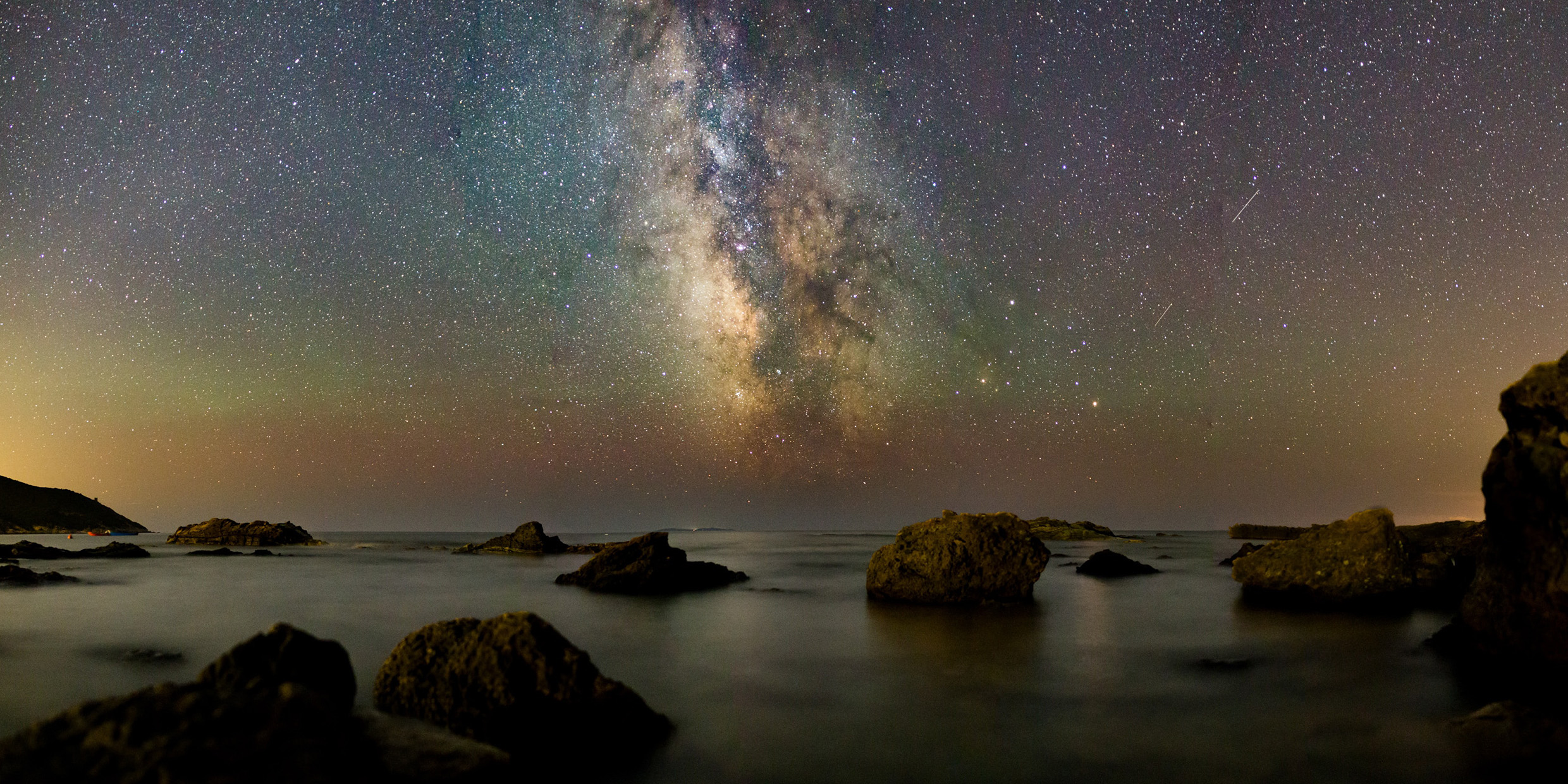Originally published 22 July 1985
For the poets of ancient China, the Milky Way was the Celestial River, “a river of stars turning in the jade vault.” Or alternatively, it was “the Great Path without a gate” that passed between heaven and Earth.
On summer evenings in mid-northern latitudes, the horizon lies parallel to the flat spiral of the Milky Way Galaxy. As the Earth turns toward night, the Milky Way rises on the eastern skyline like a gathering mist. It is the fullest reach of the Celestial River that now rises to enchant us, flowing from Cygnus in the north to Scorpio in the south, or, as the Chinese would have expressed it, from the Heavenly City of Tien Tsin to the Azure Dragon.
A story of old China tells of two lovers, the weaving girl and the herd boy, who were separated by the Great River. Only on one night of the year, the seventh night of the seventh moon, did a bridge of birds span the river and allow the lovers to meet. The weaving girl is the star Vega and the herd boy is Altair. On that night, those two stars rise with the Milky Way, and with them return the two great birds of summer, Cygnus and Aquila, the swan and the eagle, skimming low on the eastern horizon, spanning the broad white stream with outstretched wings.
No part of the night sky can bring more generous gifts to the casual observer. Here are two bright sashes of radiant light draped from pole to pole, gashed by the Dark Rift. Here are the constellations of Sagittarius and Scutum, powdered with stars. And for the view with binoculars or small telescope, there are a host of objects of delicate beauty.
Sampling of beauty
Here is the blue and gold binary star Albireo, a single point of white light to the naked eye, but two stupendous suns on the small instrument, one star 760 times more luminous than our sun, the other 120 times brighter, sapphire and topaz. Fifty solar systems could fit in the space that separates this double gem.
Here is the star known as 61 Cygni, which often can be seen with the naked eye by those far from city lights, a nondescript star, one star among thousands in the body of the Swan, famous as the first star whose distance was measured, by Bessel in 1838; 61 Cygni is 11 light years away, 65 trillion miles. Of the naked-eye stars it is the fifth-closest to Earth, after the sun, Alpha Centauri, Sirius, and Epsilon Eridani.
Here is the Lagoon Nebula in Sagittarius, visible under the best conditions to the naked eye as a patch of fuzzy light; observatory photographs show dark reefs of gas a dust, collected and condensed by gravity. Even now in the Lagoon stars are being born by the hundreds.
Here is the brightest knot of the Veil Nebula, a lace of filamentary gas in the shape of a question mark, as delicate as the mists that cling to hills in Chinese paintings. Once from a dark hillside I glimpsed the Veil Nebula in powerful binoculars, the shredded envelope of an exploded star; 30,000 years ago a star 1500 light years away blew itself to bits.
Here is the Ring Nebula in Lyra, a ghostly smoke ring for the observer with a telescope, drifting in the starry night. At the center of the ring is a hot blue dwarf star, the skeleton of a much more massive star that shrugged off its outer layers.
Here are the two delicate constellations Sagitta and Delphinus, the dart and the dolphin. Sagitta and Delphinus are mere hints of constellations, four and five 5th magnitude stars respectively, constellations for the connoisseur of night’s faintest lights.
Celestial gifts
There are other gifts of the summer Milky Way; any good star guide will lead you to them. The Celestial River of summer is banked with stars, puddled with light, shoaled with stardust. There are fish here that flick the light years with their tails, and birds with galaxies tucked beneath their wings like pinfeathers. With or without an instrument, the region is worth exploring. The only requirement is a dark sky.
On summer evenings Scorpio dominates the sky in the southeast, the constellation the Chinese called the Azure Dragon. According to the astronomer Robert Burnham, the Azure Dragon “is not the hideous maiden-devouring monster of medieval Christian myth; he is the wise and majestic incarnation of the awesome power and infinite splendor of Nature.” The Chinese imagined the Dragon to be emerging from the Celestial River, preparing to descend to Earth to confer great blessings on those who do him reverence.
This is the season of the year to reverence the power and the splendor. On summer evenings the Milky Way bounds the horizon like a leafy hedge. Nebulas bloom like flowers. Vega, Arcturus and Antares are hung like Chinese lanterns in the branches of the trees. The blessings of the Dragon are there for the taking.



